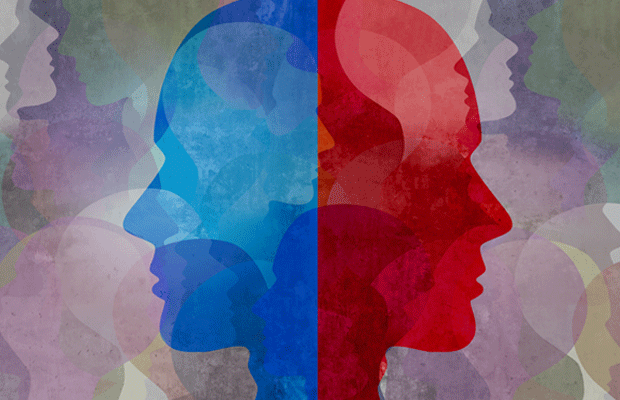Froma Walsh in 1978 discovered some rather remarkable facts about schizophrenia. 41% of schizophrenics had a grandparent die within two years of their birth, over four times more than would have been expected in the general population. A solid explanation for that has never emerged.
Bowen theory has ideas that point toward a plausible explanation.
Research Data:
In the general population, around 10% of people have had a grandparent die within plus or minus two years of their birth. From a Walsh surveyed 70 schizophrenics in their Center for Family Studies Project at Michael Reese Hospital in Chicago. 29 of them (41.4%) had a grandparent who died within two years of their birth (GD). In a small community sample of 25 people, 2(8%) had a GD near their birth, in the neighborhood of the 10% generally reported in larger surveys. Another comparison group, people hospitalized for non schizophrenic emotional illnesses, had 20% GD near birth, 9 of 45.
Modern statisticians translate this into Odds Ratios. Schizophrenics are more than four times as likely to have had a GD near their birth than people in the general population. Hospitalized non schizophrenics two times more likely. Research reported with Odds Ratios without a bigger picture are easy pickings for simplistic causal reasoning.
So, what accounts for these results? Is GD near birth a cause of schizophrenia? That’s how it would be reported in the mainstream media. GD near birth has also been interpreted as a maternal stressor that alters the brain development of the infant. Does that account for the results? Bowen theory offers more plausible explanations for these facts.
Bowen’s description of Family Reaction to Death:
I drew the ideas used in this explanation from three papers: “A Family Concept of Schizophrenia” (1960), “The Use of Family Theory in Clinical Practice” (1966), and “Family Reaction to Death” (1976). Bowen himself made most of the argument I am using in a theory section of “Family Reaction to Death”, entitled ‘Family Emotional Equilibrium and the Emotional Shock Wave’.
Bowen asserted that a large percentage of families have some kind of emotional shock reaction to the death or loss of an important person in the multigenerational family. Furthermore, the extent and intensity of that system reaction will depend, to a large degree, on the level of emotional integration of the system. Better differentiated families might have a reaction, but the effects won’t be as serious or long-lasting as are the effects in a low differentiation family. The latter can generate serious symptoms lasting for years in the family system, including the development of intense parent-child symbioses with any child who happens to be born near the time of death of an important central figure in the multigenerational family. This is consistent with what I have observed in families with serious symptoms and low differentiation emotional process.
Some dynamics of that reaction in low differentiation families:
For a good grasp of this phenomenon, one must consider the variety of features that can be found in low differentiation systems. These include intense chronic anxiety, weak individual selves, more serious symptoms, more intense cross-generational symbioses, more intense family projection process, intense emotional process of all types, more emotion and thought contagion, fuzzy boundaries, less good thinking and less effective problem solving, more crises and life events, denied or dissociated connections between events and people, unregulated primary process, high expressed emotion, more delusions, parental communication deviance, absence of support for self-development.
These low differentiation families, given the intense anxiety, the continual crises, and the serious symptoms, have a difficult time maintaining any kind of functioning stability. Often a central figure can lend a tenuous stability to the system functioning. That central figure often is a part of several crossgenerational symbioses that give some stability to the system. Then, when that central figure is lost due to death or disability, that source of stability is gone. Anxiety, symptoms, and instability go sky high in the system. This is the emotional shock wave. Some of the serious symptoms provide a little bit of a focus that can stabilize parts of the system functioning a little. When a baby is born or an infant is present while the multigenerational system is destabilized, symptomatic, and anxious, then an intense parent-child symbiosis can develop around that child. That intense symbiosis can stabilize that part of the system to some degree. However, in the case of schizophrenia, that intense parent-child symbiosis with an at-risk child may result in schizophrenia twenty years later.
Another important feature of the emotional shock wave is a strongly denied interdependence. A long quote from Bowen’s Family Reaction to Death paper describes that better than I can (FTCP p.325). “…(Emotional Shock Wave) operates on an underground network of emotional dependence of family members on each other. The emotional dependence is denied, serious life events appear to be unrelated, the family attempts to camouflage any connectedness between the events, and there is a vigorous emotional denial reaction, when anyone attempts to relate the events to each other. It occurs most often in families with a significant degree of denied emotional “fusion” in which the families have been able to maintain a fair degree of asymptomatic emotional balance in the family system…”
This perspective is consistent with some informal observations made by From a Walsh when she talked with families of their hospitalized study patients, who had the GD near birth. Most of the families of the schizophrenics who had the GD near birth had never seen the coincidence of the death and the birth. When told of it, there were strong emotions expressed about the grandparent death, in contrast to the families of the non schizophrenics, who also had GD near birth. The latter mostly already realized the coincidence, could recall clearly the difficulty of having the two coincide, remembered their sadness, but did not have the strong and persistent emotion shown by the families of the schizophrenics. Nor did the families of non schizophrenics and average families deny any impact of the coincidence of the death and birth.
References:
Bowen, M. (1960). A Family Concept of Schizophrenia. In The Etiology of Schizophrenia, edited by Don D. Jackson., 346-370. New York: Basic Books, Inc. doi:10.1037/10605-012.
Bowen, M. (1966). The Use of Family Theory in Clinical Practice. Comprehensive Psychiatry, 7:345-374.
Bowen, M. (1976). Family Reaction to Death. In Family Therapy, edited by Philip Guerin, 335-348. New York, Gardner Press.
Walsh, F. W. (1978). Concurrent Grandparent Death and Birth of Schizophrenic Offspring: An Intriguing Finding. Family Process, 17(4), 457-463.
Watt, N. F. & Nicholi, A. N.. Early Death of a Parent as an Etiological Factor in Schizophrenia. American Journal of Orthopsychiatry 49.3 (1979): 465-73.
Yates, B. T., Fullerton, C. S., Goodrich, W., Heinssen, R. K., Friedman, R. S.,
Butler, V. L., & Hoover, S. W. (1989). Grandparent Deaths and Severe Maternal Reaction in the Etiology of Adolescent Psychopathology. The Journal of Nervous and Mental Disease, 177(11), 675-680.




